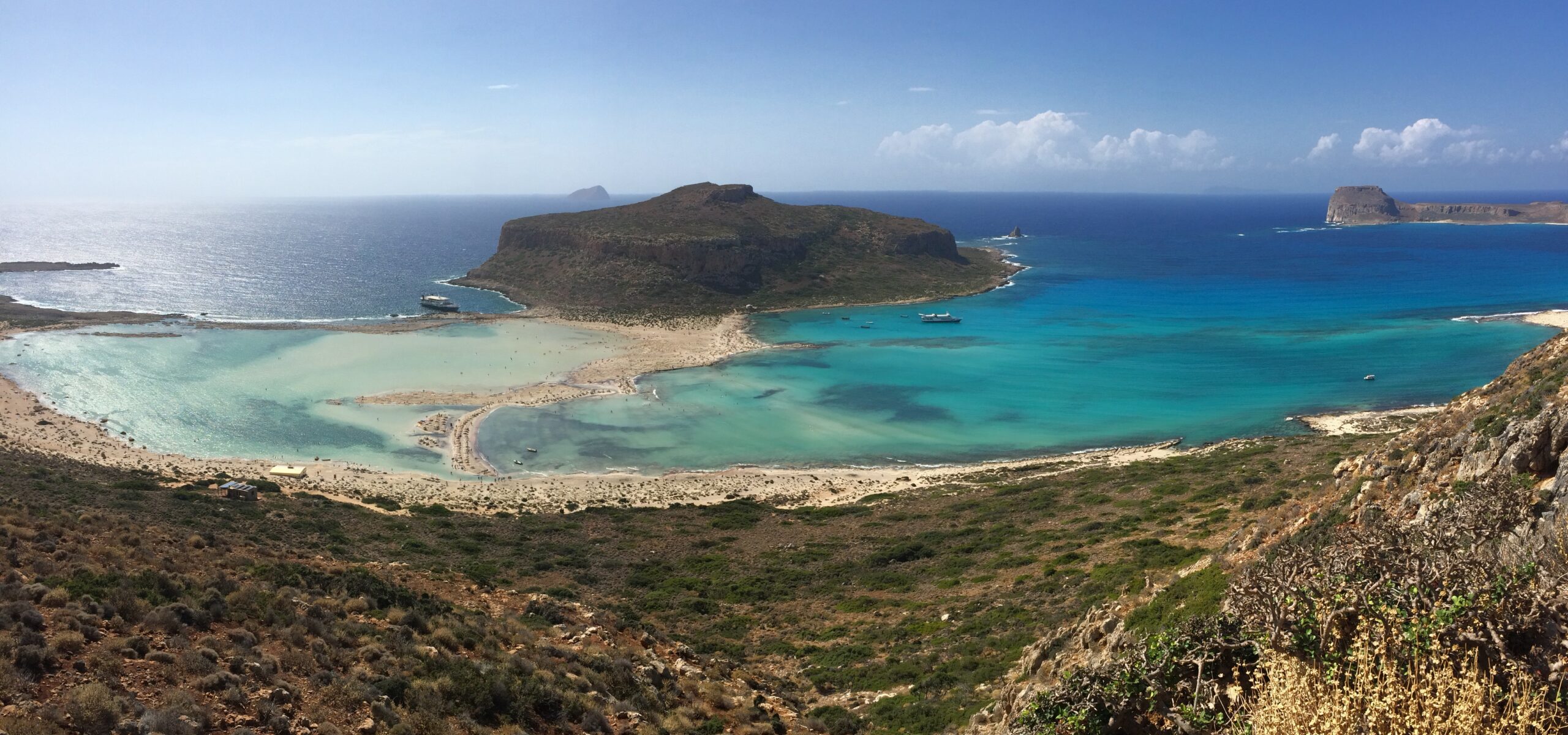Crete: Myth and Beauty in Paradise
With a history as illustrious as Crete’s its easy to dismiss the rest of the island’s attractions. And one would almost be forgiven. For what is Crete if not one of the precursors to the great Hellenistic and Golden Age civilisations? The mighty Minoans were the first structured settlement in Europe. They sort of created the wheel (metaphorically). So what a great way for the biggest Greek island to introduce itself to you? After which, you can go on to sample the famous Mediterranean diet in all its glory, enjoy some primo beaches and party on till dawn.But of course, thats just the tip of the iceberg. Anyone staying longer than a few days can testify to Crete’s visceral sense of joy; wilderness, sports and the freedom to roam are what Crete is all about.
So what’s good? Seeing as the grand isle has been continuously inhabited for ooh i dont know.. 9 millennia, (that predates the Minoans by a full 4) it’s more than likely you’ll find that interesting at least.
Summer in Crete: History & Culture
And naturally that is best experienced at Knossos Palace-the figure piece of the Minoan civilization. The iconic bull headed frescoes and murals in the archaeological compound are nothing short of stunning. They give you a glimpse of life in 1900 BC, in what is said to be Europe’s oldest city. The Minoan Palace of Phaistos is similarly impressive, as is the Palace of Malia, both of which were built around the same time as Knossos, and both in different stages of disrepair. A lot of artefacts and finds can be found in the Hania Archaeological Museum.
Crete’s latter history is peppered with invasions and conquests by the usual suspects. Romans, Byzantines and an assortment of Arabs, Ottomans, Venetians and Germans tried, and with varying degrees of success, briefly managed to subjugate Crete’s population. They left their mark in the form of castles, fortresses, churches and mosques, all which are still there for us to admire.
Hania’s 16th century Venetian harbour is probably the most striking. In Rethymno city, the Fortezza stands tall after repairs, as does Koules fortress in Iraklion. Crete holds some neat treasure trove artefacts in Sitia Archaeological Museum as well as the actual “Archeaological Museum’ (loads of museums phew). The Historical Museum of Crete, correspondingly, exposes the last 1700 years in Crete, while the Maritime Museum of Crete shows the island’s connection to the sea (hint: it’s a doozie).
Anyone in the hunt for churches, take note of the church of Panagia Keras, as well as Arkadi Monastery. Crete is big, and as such, be prepared to encounter many of them. All around. Big and small. You’ve been warned.
Summer in Crete: Beaches & Nature
Recreation in Crete? Why not. If its good enough for Russian cosmonauts on R&R after space missions, we’re pretty sure its good enough for us earth folk. And how could it not? The island spawned the Mediterranean diet, i mean come on. To start off, Samaria gorge is the biggest in Europe. Gorge of the Dead, Richitis, Imbros and St. Anthony gorges are also good fun. Hikers will delight in the fact that hiking routes (that have been there for centuries) in Crete are a thing. And seeing as the island is massive, with high peaks and a rugged terrain its probably a good idea to wipe the drool off your chin.
The plains offer some respite. Campers will find the cedar forest of Kedrodasos-an idyllic spot for chilling and connecting with nature. The Lasithi plateau is equally impressive due to its unique geological formations. On that note, its worth mentioning that Crete is home to the only Palm tree grove in Europe, conveniently situated on the edge of the beach.
Summer in Crete: Sport
Kayaking fans will be happy to hear that the rivers in Crete are many and pretty. Some of them even end up nicely on the beach. Like the one at Preveli. We wont spoil it for you. Just take a look at pictures.
Greece has some of the nicest beaches on the planet. And a lot of the are situated in Crete. Like Balos for instance. It is essentially a lagoon on the beach. Enough said. Elafonissos is just as awesome. They are of the almost tropical kind, so just a heads up-keep to the south side of the island for the really good ones. They are pure magic.
Loads of flora and fauna, too. Crete is home to some 1,000 endemic species-most of which are invertebrates and birds-as well as a healthy population of wild goats.
Summer in Crete: Food & Fun
And boy are Cretan animals tasty. The Apaki ham, which is a superb cured pork strip in marinated vinegar and different herbs is something your taste buds will thank you for. The stamnagathi lamb is as succulent as laborious to make, but make no mistake, it will knock your socks off.
Cheeses are also a big thing. It seems every village has a different recipe. Mizithra is one of the latest cheeses to emerge as a favourite, although the established graviera will give it a run for its money any day. A cheese tour can be organised around farms to get a sense of the procedures. That applies to most agricultural produce. Oranges, olive trees (of which there are many) and raki distilleries set up tours and seminars and cooking classes for visitors. That way a little piece of Crete will always be with you. Nice.
Summer in Crete: Myth and Beauty in Paradise
Food and fun in Crete are intertwined. So much so that a traditional Cretan wedding can last for days. In pure Dionysian form. Huge amounts of gamopilafo (a traditional risotto-like dish with pilau rice and meat) are routinely consumed with copious amounts of raki in a Zorba-esque drink and dance extravaganza that tests even the hardiest of British guests.




